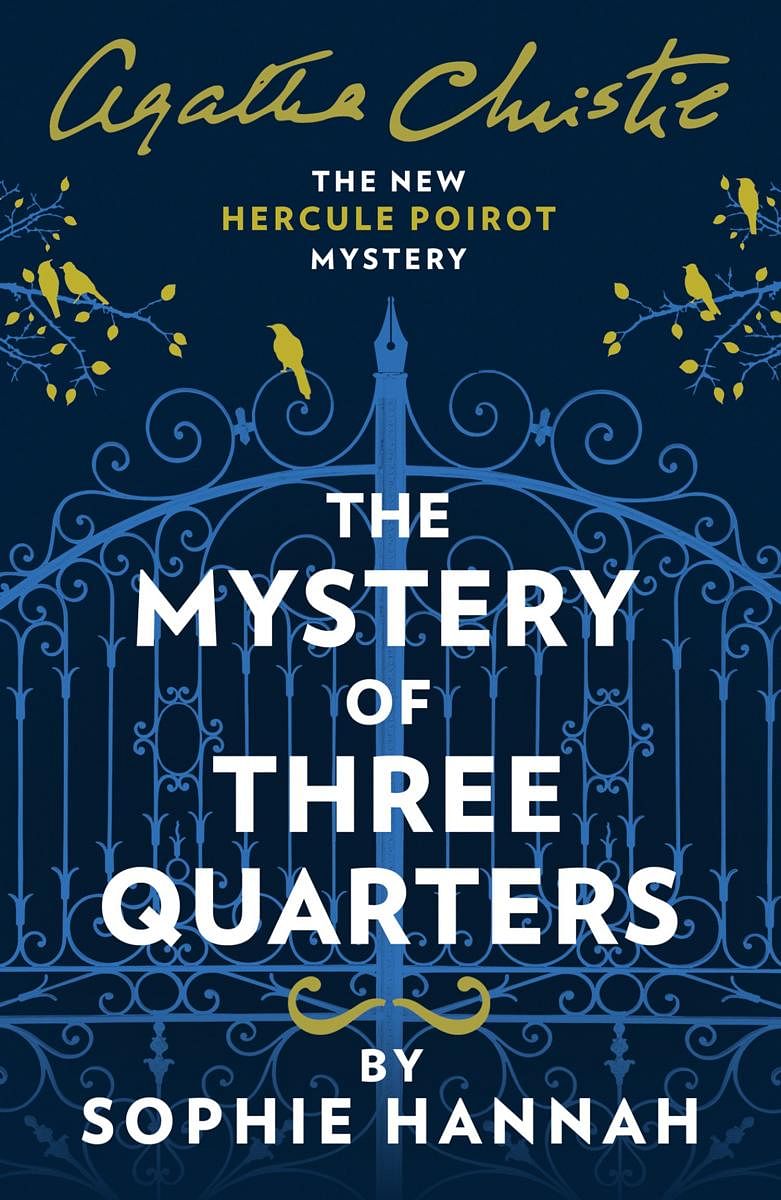
Hercule Poirot has a presence today far beyond Agatha Christie’s original books about him. TV serials, movies, fan fiction, and even comics about him have been done. It’s only logical that Christie’s estate would want to extend her legacy by commissioning further canonical stories of Poirot. Sophie Hannah, a popular mystery writer in her own right, has been writing the newer volumes, and The Mystery of Three Quarters is her third Poirot book.
The story starts off with an irate lady accosting Poirot outside his home. Apparently, she has received a letter “signed by Hercule Poirot”, falsely accusing her of murdering one Barnabas Pandy. Poirot is unable to completely convince her that this letter was a forgery. In the meantime, three other letters addressed to other people but with the same content force their respective recipients to contact Poirot as well. All the recipients claim to take the letter seriously because they know of Poirot’s reputation of being a precise and logical man — exactly the reason why, Poirot reasons, it was his name that was forged on the letters. Something strange is happening here.
Who is Barnabas Pandy? He’s an aged man who drowned in a tub in his house - apparently a simple accident. None of the four recipients have any motive in murdering him, either. What then is the purpose of all these forged letters? In spite of himself, Poirot is intrigued by the affair, and determines to investigate.
Poirot begins to focus on a seemingly small piece of the puzzle: the selection of the four specific recipients. What ties them together, why them and not, say, Pandy’s immediate family? Poirot models the problem as a slice of church window cake, which resembles a set of four squares in cross section. Three of the recipients/quarters - the dead man’s granddaughter, a teacher at a nearby school, and a parent of another child at the same school - are connected to the victim, but the fourth - a rakish son of a judge - seems to not even know the deceased.
For the longest time, we are not even sure whether there was a crime at all. If the death was an accidental drowning, as appears, there is nothing to investigate. But Poirot perseveres - he wants to understand the whole matter.
The picture seems to get murkier as he talks to Pandy’s family. He has two granddaughters, of very different natures. While one is a stolid married woman with children, the other is hippie-ish, loves dogs, and has refused to fall into society’s rhythms over the years. On the day Pandy died, the two sisters were arguing over something in another room - but their explanation of the discord seems wrong to Poirot. Then there is also the old butler in the house, the first man to find Pandy dead. He seems to know more than he lets on. And to make everything worse, Poirot meets the dead man’s lawyer and finds that Pandy was planning some updates to his will. But no one knew of that change… or did they?
Agatha Christie, in her books, explored a huge number of permutations possible in the high-society, limited-suspect-pool cozy mystery format. Without revealing the actual book where they happened, we have: unreliable narrators, multiple murderers, murderer-disguised-as-victim, accident-as-murder, and many more. These innovations manage to take the first time reader by surprise even today - the primary reason for the continuing popularity of Christie’s books.
But Hannah evolves her story somewhat. Instead of focusing on sequences of events and on alibis, she’s making it uncertain as to what the crime itself was. At the heart of the plot is an incident from the past, revealing that the normal-seeming people in the frame have their own darkness within them. This is taking the story in the direction of the newer Scandinavian thriller genre - giving it something new yet also now feeling constrained by the upper-crust civility of the Christie-mystery format. Going all the way Scandi-style would have meant a lot more blood and murder, not just a few anonymous letters. Maybe one more murder would have rounded off the book better? And possibly, instead of starting with the relatively mundane events of anonymous letter-reception, Hannah could have opened with something more gripping?
These thoughts only cross your mind a while after you’ve finished the book, by the way. And it’s unfair to compare the Brit-cozy-mystery genre to Scandi-thriller in quite this way; each have their own conventions.
If you’re expecting a Poirot mystery, you’re getting your expectations fulfilled. Hannah draws you into the plot and keeps you turning the pages, unveiling the solution with the required assemblage of characters in the drawing room. She also matches the typically old-style British tone from Christie. For all the millions of fans of the ‘little grey cells’, this book is a welcome offering.